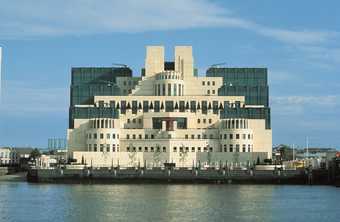Postmodern architecture has been intensely debated since it first emerged in Britain in the late 1970s. This panel discussion explores the contexts in which postmodernism developed, how London has been shaped by the movement, and the recent surge in interest in postmodern buildings. How are contemporary architects responding to postmodernism today? Does postmodernism remain a radical idea?
Panellists include the acclaimed postmodern architects Terry Farrell and Piers Gough, alongside founding partner of muf architecture, Liza Fior. The event will be chaired by Professor Jane Pavitt (Kingston University).
The discussion takes place in the Clore Auditorium, designed by James Stirling – part of the postmodern extension to Tate Britain that was completed in 1987. It follows an afternoon tour (16.00–18.00) exploring the architecture of Tate Britain and its surroundings. A limited number of combined tickets for the tour and panel discussion are available for £22 (£18 concessions).
These events are organised in collaboration with Sir John Soane’s Museum, where the exhibition The Return of the Past: Postmodernism in British Architecture runs from 16 May – 26 August 2018.
Biographies
Terry Farrell
Sir Terry Farrell CBE is considered to be the UK’s leading architect planner, with offices in London and Hong Kong. During 50 years in practice he has completed many award winning buildings and masterplans including Embankment Place and The Home Office Headquarters as well as millennium projects such as The Deep in Hull and Centre for Life in Newcastle. UK Masterplans include Greenwich Peninsula, Paddington Basin and Newcastle Quayside. In East Asia, notable projects include Incheon airport in Seoul, Beijing Station and Guangzhou Station in China (the largest in the world). In Hong Kong he has designed the Peak Tower, Kowloon Station development and the British Consulate.
Liza Fior
Liza Fior is a founding partner of the London-based MUF architecture/art, a practice that negotiates between the built and social fabric. MUF was awarded the 2008 European Prize for Public Space for the new town square for Barking, United Kingdom, as well as served as the creative directors of the British Pavilion at the Venice Biennale in 2010. Fior recently taught at Yale University's School of Architecture.
Jane Pavitt
Professor Jane Pavitt is Head of the School of Critical Studies and Creative Industries at Kingston University. She is a design historian and curator, and her research practice involves the making of exhibitions, as well as a research focus on the social and political contexts for design and architecture since the second world war. She joined Kingston in 2017; prior to that she was Dean of Humanities at the Royal College of Art, and RCA head of the V&A/RCA History of Design Programme (2010-2015). From 1997 to 2010, she was the University of Brighton Principal Research Fellow at the V&A, where she curated exhibitions, including Brand.New (2000); Cold War Modern: Design 1945-70 (2011); and Postmodernism: Style and Subversion 1970-90 (2011). She is also the co-curator of the 2018 exhibition Superstructures: The New Architecture 1960–1990 at the Sainsbury Centre for Visual Arts, Norwich.
Piers Gough
Piers Gough CBE RA (born 24 April 1946) is an architect in the practice CZWG. His younger brothers are the composer Orlando Gough and Jamie Gough, the University of Sheffield's senior lecturer in Town and Regional Planning. He co-founded the practice Campbell Zogolovitch Wilkinson and Gough, (now CZWG), in 1975. His work includes:1988: Janet Street-Porter's house, central London; 1991: Crown Street regeneration, Glasgow; 1993: Westbourne Grove public lavatories, west London; 1994: Brindley Place Cafe, Birmingham; 2000: Green Bridge, Mile End Park, east London. Gough was awarded a CBE in 1998. From 2013 to 2017 he was Professor of Architecture at the Royal Academy Schools.

